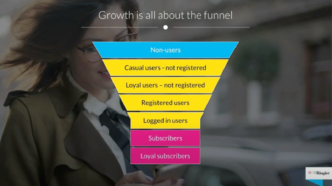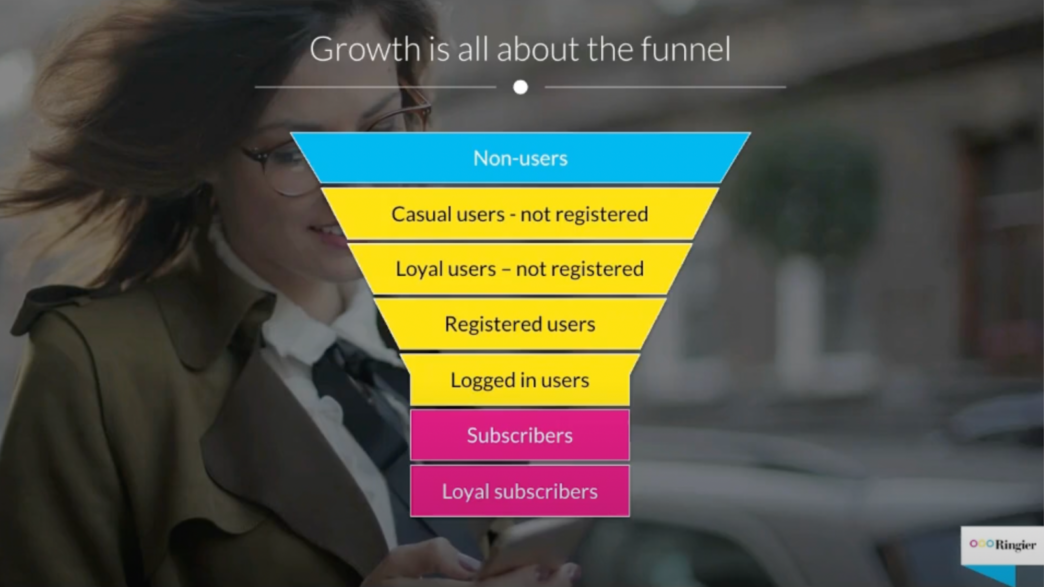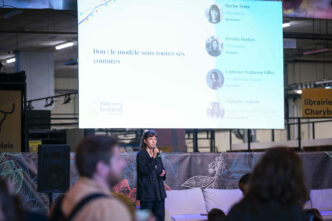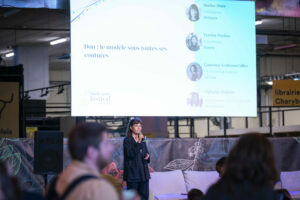

190 years of family-owned business, with 6,400 employees working at over 140 subsidiaries across 19 countries and nearly 80% of EBITDA coming from digital… What can Ringier’s success in adapting to, and thriving in, the digital world tell others hoping to do the same?

Percentage of EBITDA from digital is an important KPI for Patrick Rademacher and the Ringier group, who use this metric to measure how they’re succeeding in the digital transformation of their portfolio.
Having gone from a printing plant and newspaper 190 years ago to starting their digital transformation around 15 years ago, their goal is to be equipped for not only surviving but thriving in the digital future of publishing.
The Global Media Unit goals
- Knowledge exchange: we’re facing the same strategic challenges in every country. We’re better off discussing them together and sharing best practices as well as potential solutions rather than sitting in silos. One of Patrick’s examples was the end to third-party cookies, hence the 1st party data initiative (discussed later in the article)
- Support through expertise: provide support through experts to all markets, but also the other way around, creating a place to exchange with those working within individual titles, and also benefiting from the corporate power in terms of business, market and trends research
- Access to technology: scaling technology as a group, with cost sharing, such as through Ringier Connect, a Single Sign On solution which is also related to OneLog
- Strategic guidelines: define strategic guidelines to roll out to the whole group, for instance guidelines for maximizing the potential of AI
But the most important goal is growth.
For Patrick, COO of the GMU, and the rest of the board, growth is all about building a ridgid user funnel.
“Growth is all about the funnel”

This concept is fairly new to the group, only introduced when they started talking about registered users and paywalls some years ago, but it has been an increasingly more important way of thinking for growth.
Why? Because this funnel brings together the two most important digital revenue streams – advertising and subscription.
As the reader moves through the funnel, they become more engaged which means higher advertising revenue thanks to better targeting, and higher propensity to subscribe. This is particularly the case with registration, a key step in the funnel for Ringier publishers.
In fact, many titles in the group launch a registration model as a strategy in and of itself before moving to subscription. As Patrick highlighted, media is one of the few industries that doesn’t require readers to register. We need to make it understood that registration doesn’t hurt, it’s actually for the benefit of everyone, both readers and media. But it’s not easy to convince internal teams who often need to be educated on the market context – such as the end to 3rd party cookies – what this means and how strategies such as registration can provide a solution.
Blick.ch, for instance, can be a role model for titles who are yet to move into digital subscription. As a traditionally reach-strong title, they’ve always been prudent to move into the subscription space because of concerns of the effects of this model on traffic.
Will registration and subscription damage reach, leading to losses in advertising revenue?
No. If you do it in an intelligent manner you can succeed in both, which has been one of the biggest learnings for Blick, starting with registration before recently moving to subscription with Blick+.
And this is one of the other benefits for Ringier. Every title is at a different stage of building steps and moving users deeper in the funnel towards high ARPU, but the group provides a space for publishers to learn from one another, always taking into account the local context (although, ultimately, in the bigger picture, we’re all facing similar challenges and the solutions aren’t too dissimilar).
For example, whilst Blick has only just launched Blick+, Onet Premium from Poland, has recently launched a bundle, bringing together all their portfolio.
The 5 R’s of digital transformation
To support these funnel-building efforts and help Ringier titles succeed in digital transformation, the GMU has developed a 5-point strategy framework and built a KPI dashboard with the goal of ensuring that each title is focusing on the developments that will ensure sustainability.
- Relevance of the brands, also in comparison with how the rest of the market is performing, measured by weekly online reach and social engagement
- Reputation of the brands, measured through brand trust and core web vitals
- Reach – high traffic rates, specifically monthly active users (MAU), monthly share of users > 4 sessions and ranked print reach
- Revenue – advertising and subscription, of course, but also print, commercial, etc. measured by EBITDA margin, ARPU, sales growth & print sales growth
- Resilience, both in terms of diversifying revenue and sources of traffic to not be dependent on a single stream, making the titles more resilient to market changes or situations like Covid. This is measured by # significant revenue streams, logged in sessions / total sessions, average time spent / session and healthy traffic
“I am convinced that if you want to succeed as a media brand in the long run, you have to be strong on these five dimensions. And that has become even more true in the context of generative AI.”
Patrick Rademacher

These KPIs are used to build a dashboard clearly indicating the strategic positioning of a title, ultimately helping teams to make more informed decisions, clearly identify where their strong and weak points are and put the work into developing in the right direction.
So far, the KPIs are only being measured for larger titles as it takes some time to establish and measure the metrics effectively, but a spider web graph gives a good picture of where work is needed for those using this framework so far.
How do GMU do this effectively with so much diversity between titles?
Traditionally, all markets have a strong local management, but the GMU also aims to foster collaboration and use the learnings from each title to support others facing similar challenges.
So, they established the GMU senates, bringing together the key decision makers in each field from across the group – advertising, editorial, business development, audience development, product, tech and digital user market. The attendees not only discuss topics of prioritization, learnings and best practices, but also work together in their specific field to align and make common decisions together, with one person from the GMU taking the lead.
The GMU also organizes an online conference twice a year, bringing together the 120 top media executives at Ringier for a half day knowledge-exchange event with an agenda filled with – internal and external – experts discussing the most important initiatives and projects.
Finally, there’s the GMU initiatives, with roughly 30 projects running at a time, such as the AI, gamification and 3rd party cookies/1st party data initiatives.
For example:
The 3rd party cookies/1st party data initiatives
In Patrick’s opinion, there’s a huge gap in knowledge within the whole media industry on the importance of first-party data as well as where a title can collect it and put it to use.
Some markets are already in the game and collecting data, they just need to put it to use in talking to readers in a more personalized way to move readers deeper down the funnel. But others haven’t started de-anonymizing yet.
The goal therefore is to close this gap within the Ringier group, making sure that everyone is at the same stage of understanding the context of the end of 3rd party cookies and how they can work towards a solution.
There are 3 streams to achieve this:
- Tech – What kind of technology do we need to gather this first-party data? Hence the launch of their technology OneLog / Ringier Connect, for example, to create a single sign-on for readers for the whole media portfolio within a market
- Product – How do we make sure that we can make use of this data to improve our products? Making use of feedback and analyzing reader behavior etc to make sure products satisfy their needs.
- Advertising – How can we make use of 1st party data in terms of advertising, in a responsible, transparent and compliant way? This depends on the tech solution and local context – where the publisher is in their development of the funnel, coming back to diversifying revenue streams. But the topic of bringing together different kinds of data from different sources (e.g. registration vs cookie consent vs subscription) is complex
What about the AI initiative?
Patrick is also co-leading the Ringier Group AI Board, together with Petra Ehmann, Chief Innovation Officer. This board was installed by the Ringier Group Executive Board in May. The main objective of this board is to coordinate AI-related activities within the Ringier Group, ensure knowledge exchange around AI, drive promising AI initiatives and define guidelines.
The mission of the AI Board: “We empower the implementation of AI in our products in a responsible way”.
As one of the first media companies, Ringier introduced Group-wide AI guidelines shortly afterwards.
So far, the AI Board is conducting and collecting learnings from general use cases group-wide, defining KPis to evaluate success, and looking at the wider context to see where AI could be most valuable.
For Patrick, there are 2 main fields for putting AI to use:
- To support internal processes, gaining speed, improving quality and being more efficient. For instance in translating text
- To build better products that are more suitable to the needs of readers and help achieve the publisher’s goals
Patrick believes that (generative) AI will have a significant impact on the media industry, and he sees a big positive potential of AI for journalism and for the media business in general. At the same time, Ringier is also very conscious of the responsibility that comes along with this new technology, especially when it comes to transparency, journalistic quality, and the trust that our readers and users put into us.
> Patrick recently shared more on the topic of AI and guidelines at Ringier in an article published on INMA’s blog












